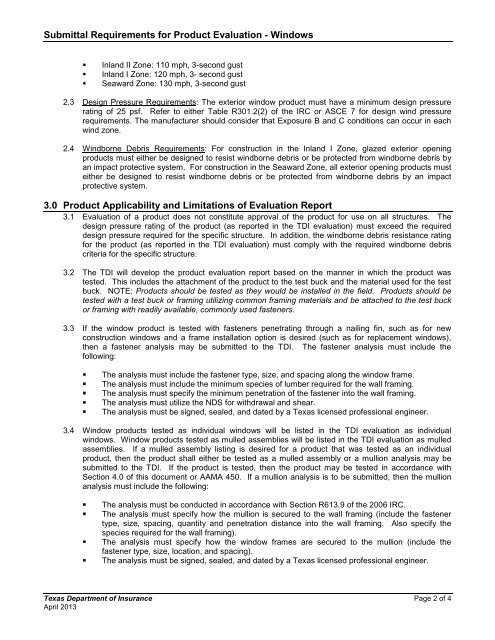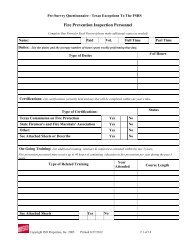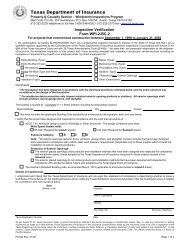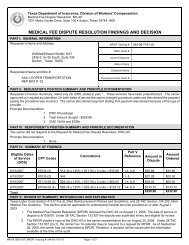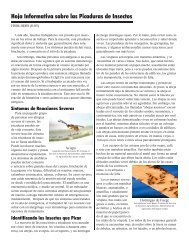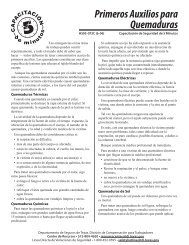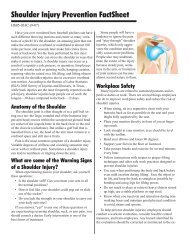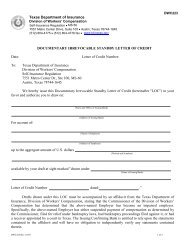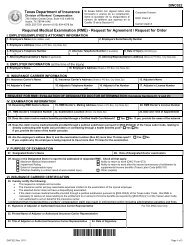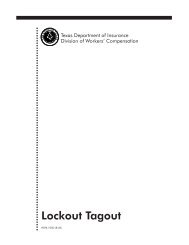Windows - Texas Department of Insurance
Windows - Texas Department of Insurance
Windows - Texas Department of Insurance
Create successful ePaper yourself
Turn your PDF publications into a flip-book with our unique Google optimized e-Paper software.
Submittal Requirements for Product Evaluation - <strong>Windows</strong><br />
• Inland II Zone: 110 mph, 3-second gust<br />
• Inland I Zone: 120 mph, 3- second gust<br />
• Seaward Zone: 130 mph, 3-second gust<br />
2.3 Design Pressure Requirements: The exterior window product must have a minimum design pressure<br />
rating <strong>of</strong> 25 psf. Refer to either Table R301.2(2) <strong>of</strong> the IRC or ASCE 7 for design wind pressure<br />
requirements. The manufacturer should consider that Exposure B and C conditions can occur in each<br />
wind zone.<br />
2.4 Windborne Debris Requirements: For construction in the Inland I Zone, glazed exterior opening<br />
products must either be designed to resist windborne debris or be protected from windborne debris by<br />
an impact protective system. For construction in the Seaward Zone, all exterior opening products must<br />
either be designed to resist windborne debris or be protected from windborne debris by an impact<br />
protective system.<br />
3.0 Product Applicability and Limitations <strong>of</strong> Evaluation Report<br />
3.1 Evaluation <strong>of</strong> a product does not constitute approval <strong>of</strong> the product for use on all structures. The<br />
design pressure rating <strong>of</strong> the product (as reported in the TDI evaluation) must exceed the required<br />
design pressure required for the specific structure. In addition, the windborne debris resistance rating<br />
for the product (as reported in the TDI evaluation) must comply with the required windborne debris<br />
criteria for the specific structure.<br />
3.2 The TDI will develop the product evaluation report based on the manner in which the product was<br />
tested. This includes the attachment <strong>of</strong> the product to the test buck and the material used for the test<br />
buck. NOTE: Products should be tested as they would be installed in the field. Products should be<br />
tested with a test buck or framing utilizing common framing materials and be attached to the test buck<br />
or framing with readily available, commonly used fasteners.<br />
3.3 If the window product is tested with fasteners penetrating through a nailing fin, such as for new<br />
construction windows and a frame installation option is desired (such as for replacement windows),<br />
then a fastener analysis may be submitted to the TDI. The fastener analysis must include the<br />
following:<br />
• The analysis must include the fastener type, size, and spacing along the window frame.<br />
• The analysis must include the minimum species <strong>of</strong> lumber required for the wall framing.<br />
• The analysis must specify the minimum penetration <strong>of</strong> the fastener into the wall framing.<br />
• The analysis must utilize the NDS for withdrawal and shear.<br />
• The analysis must be signed, sealed, and dated by a <strong>Texas</strong> licensed pr<strong>of</strong>essional engineer.<br />
3.4 Window products tested as individual windows will be listed in the TDI evaluation as individual<br />
windows. Window products tested as mulled assemblies will be listed in the TDI evaluation as mulled<br />
assemblies. If a mulled assembly listing is desired for a product that was tested as an individual<br />
product, then the product shall either be tested as a mulled assembly or a mullion analysis may be<br />
submitted to the TDI. If the product is tested, then the product may be tested in accordance with<br />
Section 4.0 <strong>of</strong> this document or AAMA 450. If a mullion analysis is to be submitted, then the mullion<br />
analysis must include the following:<br />
• The analysis must be conducted in accordance with Section R613.9 <strong>of</strong> the 2006 IRC.<br />
• The analysis must specify how the mullion is secured to the wall framing (include the fastener<br />
type, size, spacing, quantity and penetration distance into the wall framing. Also specify the<br />
species required for the wall framing).<br />
• The analysis must specify how the window frames are secured to the mullion (include the<br />
fastener type, size, location, and spacing).<br />
• The analysis must be signed, sealed, and dated by a <strong>Texas</strong> licensed pr<strong>of</strong>essional engineer.<br />
<strong>Texas</strong> <strong>Department</strong> <strong>of</strong> <strong>Insurance</strong> Page 2 <strong>of</strong> 4<br />
April 2013


